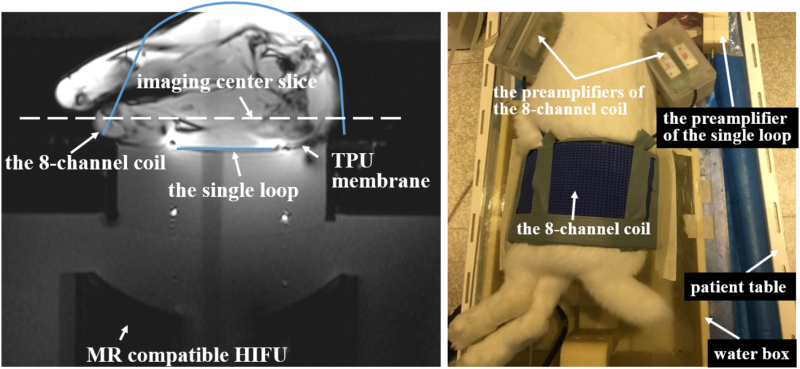Rabbits Study Show Novel Flexible 9-Channel Coil Array for MR-Guided HIFU
Date:30-03-2020 | 【Print】 【close】
Magnetic Resonance (MR) Guided High Intensity Focused Ultrasound (HIFU) is a revolutionary, completely non-invasive treatment.
Use MR images to identify where the fibroid is and what portion has been treated, without the need for any incisions, and HIFU procedure can be also applied to increase the flow of blood or lymph or to destroy tissue, such as tumors, through a number of mechanisms.
However, MRT can be affected by respiratory movement and other physiological motions, and requires continuous correction of HIFU focal point position to ensure the accuracy of treatment, makes treatment difficult.
In order to achieve a high temporal resolution, fast imaging technology for temperature mapping with real-time therapy control needs to be implemented. And the signal-to-noise ratio (SNR) is a critical factor in MR-guided HIFU for local heating, which can affect the accuracy of temperature measurement.
In a study published in Magnetic Resonance Imaging, a team from the Shenzhen Institutes of Advanced Technology (SIAT) of the Chinese Academy of Sciences, developed a flexible 9-channel coil array for fast 3D MR thermometry in MR-guided HIFU.
The research team demonstrated the applicability of the dedicated coil array by the experiments on rabbits ‘leg muscle, in the fast temperature imaging on the muscle with heating, a high temporal resolution of 3.3 seconds with a temperature measurement precision of ±0.56 oC has been achieved.
Compared to a commercially available 4-channel flexible coil array, this dedicated 9-channel coil array has a much higher SNR, and with at least a 2.6-fold increment in the region of interest (ROI), showed a better parallel imaging capability.

Figure. Illustration of the HIFU heating experiment and room temperature experiment setup. The rabbit was placed on an acrylic container, and an MR-compatible, single-element HIFU transducer was placed in the water box directly under the container. A thermoplastic polyurethane (TPU) membrane was used to cover the hole at the bottom of the container to separate the rabbit from water. (Image by CHEN Qiaoyan)
Media Contact:
ZHANG Xiaomin
Email: xm.zhang@siat.ac.cn